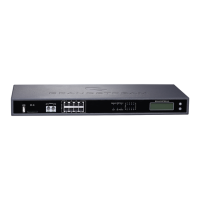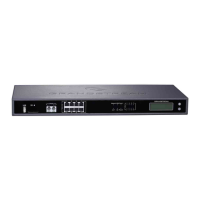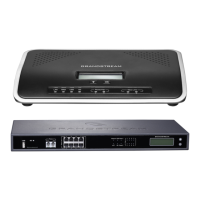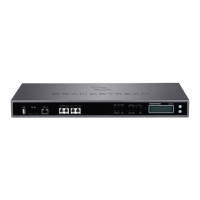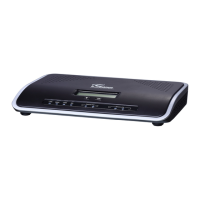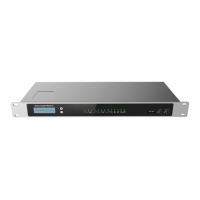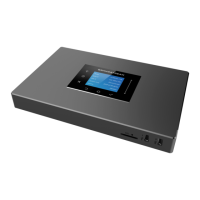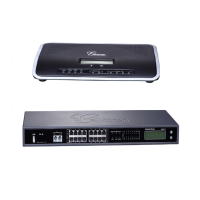UCM6200 Series User Manual
If enabled, the batch added extensions will be added to LDAP Phonebook PBX list; if
disabled, the batch added extensions will be skipped when creating LDAP
Phonebook.
If enabled, extensions will be able to login to user portal and use Web RTC features.
Configure the maximum duration of call-blocking.
Use NAT when the PBX is on a public IP communicating with devices hidden behind
NAT (e.g., broadband router). If there is one-way audio issue, usually it's related to
NAT configuration or Firewall's support of SIP and RTP ports.
The default setting is enabled.
By default, the PBX will route the media steams from SIP endpoints through itself. If
enabled, the PBX will attempt to negotiate with the endpoints to route the media
stream directly. It is not always possible for the PBX to negotiate endpoint-to-endpoint
media routing. The default setting is "No".
Select DTMF mode for the user to send DTMF. The default setting is "RFC2833". If
"Info" is selected, SIP INFO message will be used. If "Inband" is selected, 64-kbit
codec PCMU and PCMA are required. When "Auto" is selected, RFC2833 will be
used if offered, otherwise "Inband" will be used.
If enabled, empty SDP packet will be sent to the SIP server periodically to keep the
NAT port open. The default setting is "Yes".
Configure the number of seconds for the host to be up for Keep-alive. The default
setting is 60 seconds.
If the end device/phone has an assigned PSTN telephone number, this field should
be set to "User=Phone". Then a "User=Phone" parameter will be attached to the
Request-Line and TO header in the SIP request to indicate the E.164 number. If set
to "Enable", "Tel:" will be used instead of "SIP:" in the SIP request. The default setting
is disabled.
The maximum endpoints which can be registered into this extension. For security
concerns, the default value is 1.
Enable SRTP for the call. The default setting is "No".
Select Fax mode for this user. The default setting is “None”.
• None: Disable Fax.
